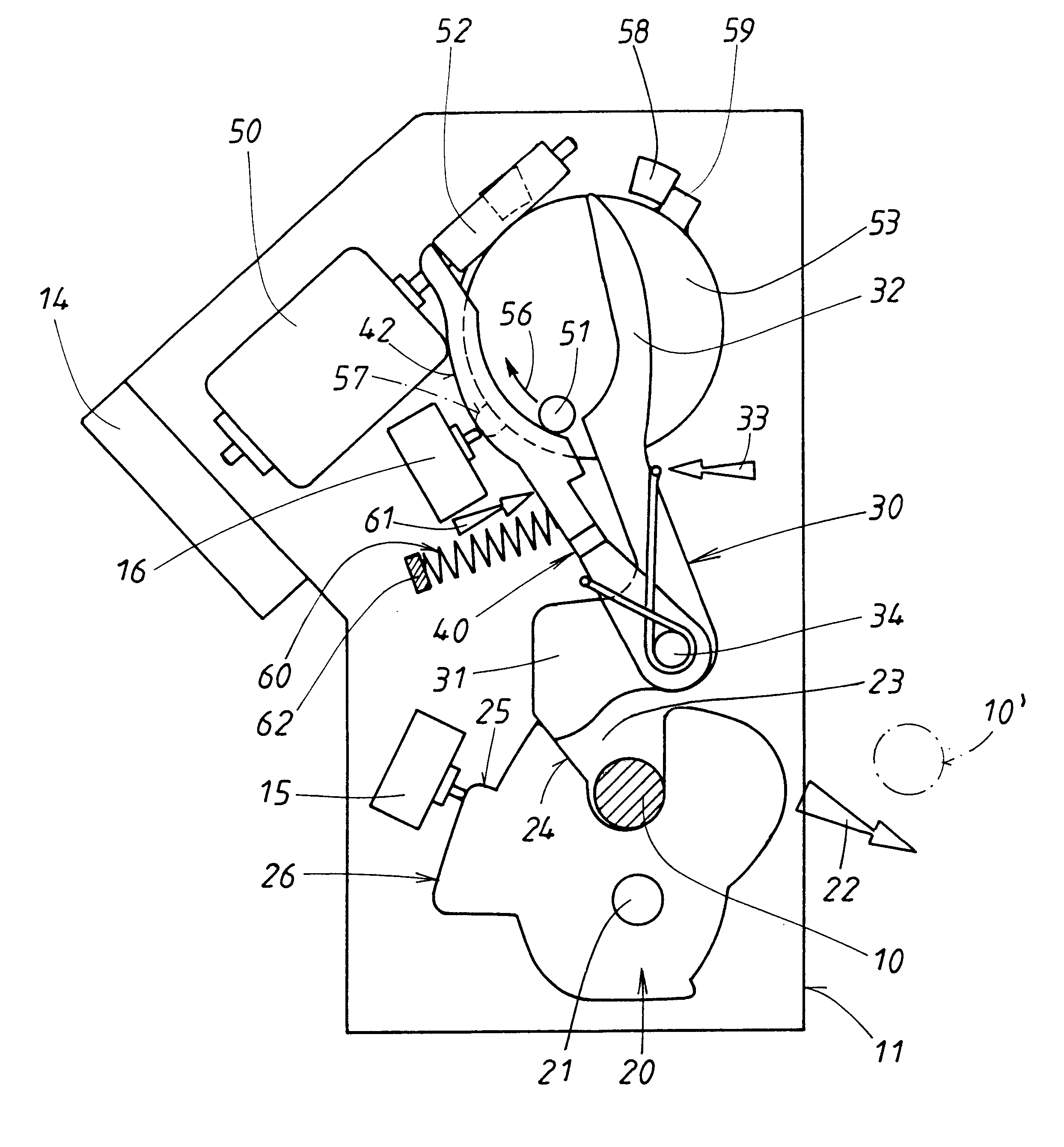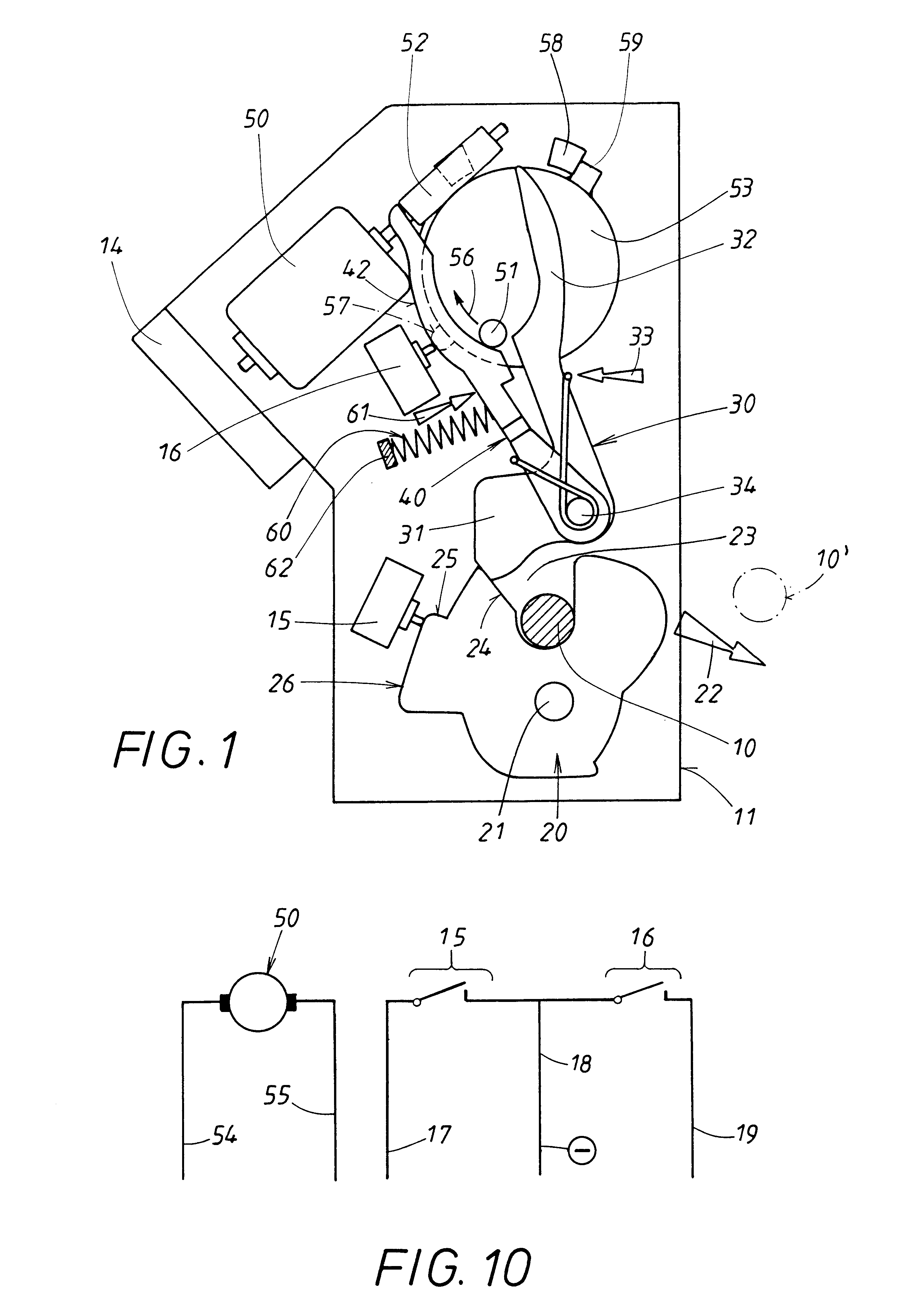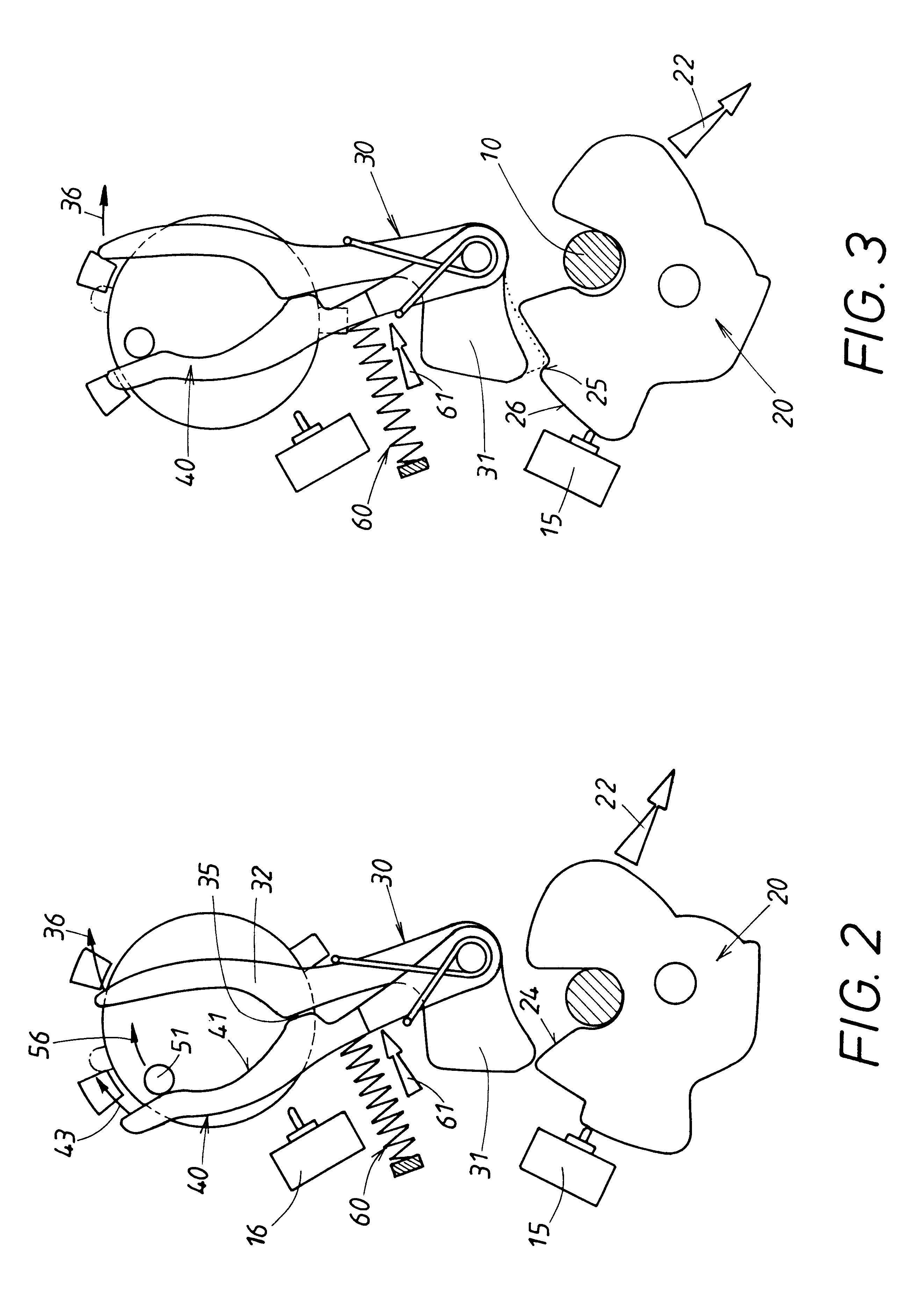Rotating catch lock, specially for motor vehicles
a technology for motor vehicles and latches, applied in the field of rotating latches, can solve the problems of occupants trapped in the vehicle, more energy is required, and a large amount of power is required to operate the motor,
- Summary
- Abstract
- Description
- Claims
- Application Information
AI Technical Summary
Benefits of technology
Problems solved by technology
Method used
Image
Examples
Embodiment Construction
The rotary catch lock comprises a closing element 10, designed here as a bolt, which is attached permanently to a stationary door post of a motor vehicle body and which is emphasized by shading in the figures for the sake of clarity. The other components of the rotary catch lock are installed in a housing 11 of a movable motor vehicle door, to which a rotary catch 20 in particular belongs. Rotary catch 20 can be rotated between two end positions, one of which is shown in FIG. 1, the other in FIG. 6. In between these two end positions there are several other important intermediate positions, which are shown in FIGS. 2-4. The rotary catch is seated on an axle 21 and is subject to a restoring force acting upon it, which can arise in various ways and which is illustrated by a force arrow 22 in the figures. Restoring force 22 tries to rotate rotary catch 20 into the rotational end position shown in FIG. 6, where it is held in a defined position by a stop 12.
The rotary catch has a shaped ...
PUM
 Login to View More
Login to View More Abstract
Description
Claims
Application Information
 Login to View More
Login to View More - R&D
- Intellectual Property
- Life Sciences
- Materials
- Tech Scout
- Unparalleled Data Quality
- Higher Quality Content
- 60% Fewer Hallucinations
Browse by: Latest US Patents, China's latest patents, Technical Efficacy Thesaurus, Application Domain, Technology Topic, Popular Technical Reports.
© 2025 PatSnap. All rights reserved.Legal|Privacy policy|Modern Slavery Act Transparency Statement|Sitemap|About US| Contact US: help@patsnap.com



